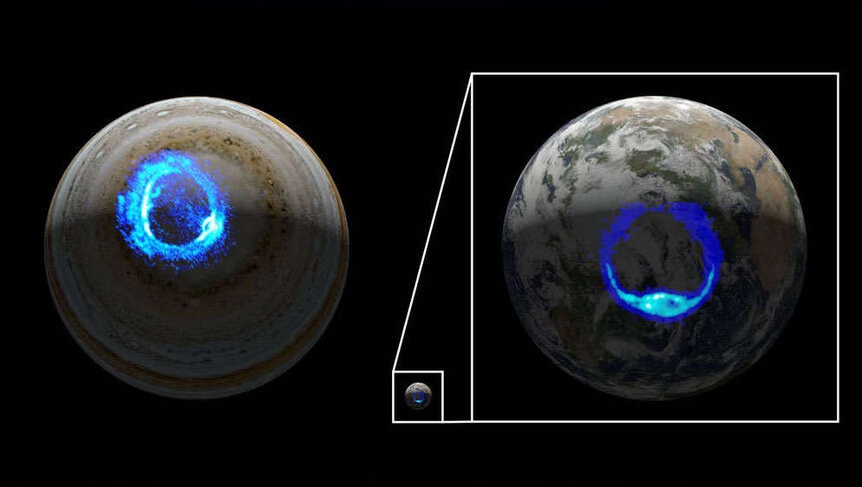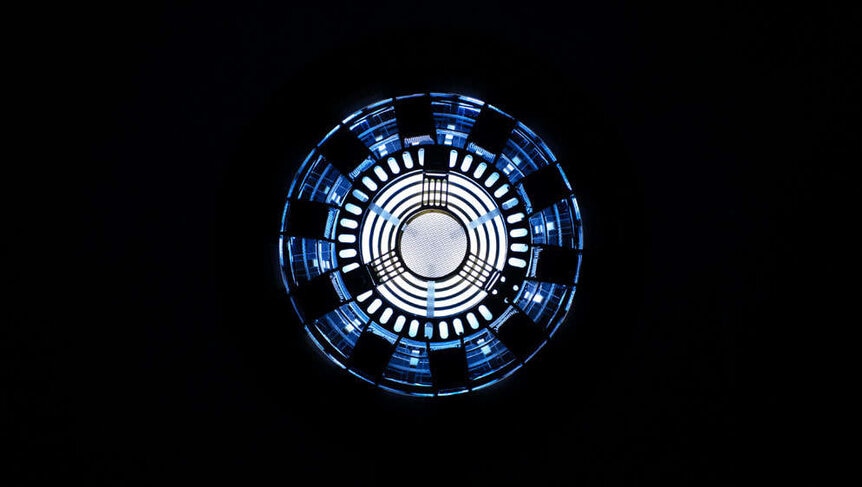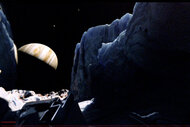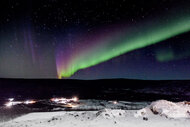Create a free profile to get unlimited access to exclusive videos, sweepstakes, and more!
This could be why Jupiter’s auroras look like Tony Stark’s arc reactor and are just as sci-fi

The Avengers fought a fictional battle in space, but something actually exists out there that at least looks like the power source of Stark Tower and the Iron Man suit. Could it be a cosmic arc reactor?
Jupiter’s auroras appear to be almost supernatural as they glow in the darkness of the void. NASA’s Juno spacecraft has revealed something in these already surreal light shows that would have made the arc reactor look even cooler — luminous, rapidly expanding rings. Southwest Research Institute (SWRI) scientists are now getting closer to finding out what causes this mysterious phenomenon. When supersonic charged solar particles reach Jupiter and hit its magnetosphere, they are thought to cause strange emissions when they react with plasma.
But wait. How can that happen when a planet has a magnetic field 20,000 times stronger than Earth’s? Meaning, so immense that particles from the solar wind start getting deflected when they run into it 2 to 4 million miles before they ever reach the gas behemoth.
“The main advantage of Juno compared to Hubble is that it can observe Jupiter’s auroras from a unique vantage point, especially on the nightside of the planet, which Hubble cannot do,” researcher Vincent Hue, who led a study recently published in Journal of Geophysical Research: Space Physics, told SYFY WIRE.
Because it is a spectrograph that sees things in UV, Juno can make sense out of different elements of light in that range by separating them. Not to discredit Hubble. The iconic space telescope is also the only UV space telescope out there right now, becuase if humans were to observe in UV from the ground, there is no sunscreen in existence that would keep us from getting burned.
What exactly happens when solar particles run into the magnetosphere has still not been completely demystified. They may have interactions at its edge, or magnetopause, which show up as those eerily glowing rings in its auroras. Juno and Hubble observations have shown that processes deep inside the planet push around those charged particles at the magnetopause. These processes are the greatest power source for those arc reactor rings (as opposed to Tony’s arc reactor being a power source in itself). These forces are behind Jupiter’s rotation, which controls how charged solar particles move around in the magnetosphere.
"The interaction between the interplanetary magnetic field (IMF), or the magnetic field carried out by the solar wind, and Jupiter’s magnetic field is not well-understood," said Hue. "A magnetic reconnection happens when oppositely directed magnetic field lines reconnect in a plasma. Jupiter's magnetic field energy is then converted into kinetic energy and used to accelerate particles along the magnetic field lines, causing their own kind of aurora."
A Jovian day is just 10 hours because Jupiter rotates on its axis more than twice as fast as Earth, and faster than any other planet in the solar system. (Imagine having less than half the time you normally have to get everything done before you finally crash.)
Auroras and their secrets are one of the reasons the Juno mission, whose SWRI-led UVS instrument has been able to detect faint auroras by those rings, has been extended. UVS is the ultraviolet instrument aboard Juno that detects UV emissions and longer wavelengths of light from Jupiter’s auroras. It has been able to see what Jovian auroras look like and how bright they are, along with measuring how energetic auroral particles are as well as how they flow.
The SWRI research team hypothesizes that the rings probably emerge when solar plasma interacts with plasma from Jupiter and triggers what are known as Kelvin-Helmholtz instabilities. This is what happens at the interface between the solar wind and the Jovian magnetosphere, with pressure causing turbulence as the particles on each side move at different speeds. They also think that, at least on tidally locked Jupiter’s day side, it is possible that the convergence of its magnetic field and the magnetic fields of other planets could have something to do with it.
"We think that the magnetic field lines can get twisted and reconnect, which leads to charged particles travelling along the Jovian magnetic field lines," Hue said. "These particles may eventually end up traveling all the way to the planet itself and trigger their own kind of aurora. This is one possible interpretation that could explain our recently discovered circular expanding aurora."
Juno will continue to investigate what superpowers make the auroras of Jupiter appear to be next-gen Stark technology. It will follow up on previous observations with next-gen instruments that will figure out what is going on with the particles in the Jovian magnetosphere. These gadgets include JADE (Jovian Auroral Distributions Experiment), WAVES (a radio and plasma waves instrument), MAG (a magnetometer) and what has to be the most awesome acronym for something we've sent into space, JEDI (Jupiter Energetic-particle Detector Instrument). Seeing what kinds of interactions are going on between particles right at the source of the auroras may finally reveal what forces conjure them.
"If Juno were to travel across a region of the magnetosphere that is responsible for producing these faint expanding auroral events, its instruments could fully characterize the associated particle distributions," Hue said. "Based on the spectral characteristics of these new type of auroras, we have a decent idea as to what particles are producing them, but making the measuring in-situ would definitely teach us more about how they form."
You can keep an eye on the Juno mission here. Meanwhile, maybe Jupiter should be known as the Iron Man planet from now on.
















